island hopping ’13, day 2
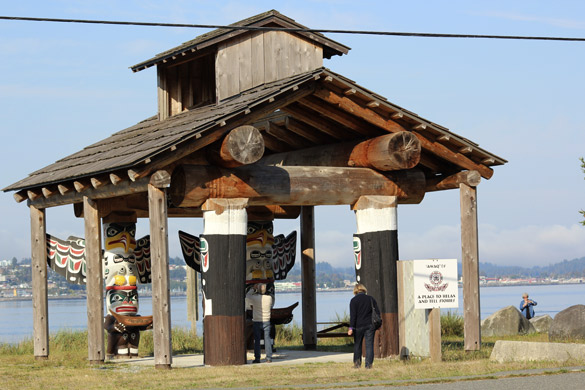
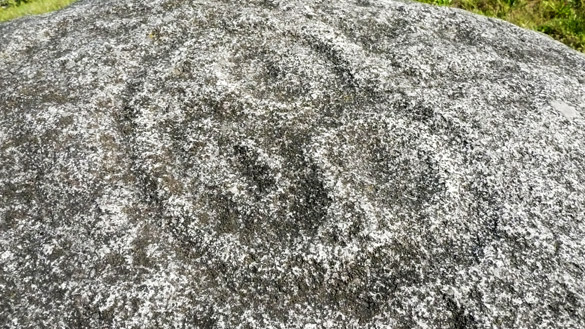
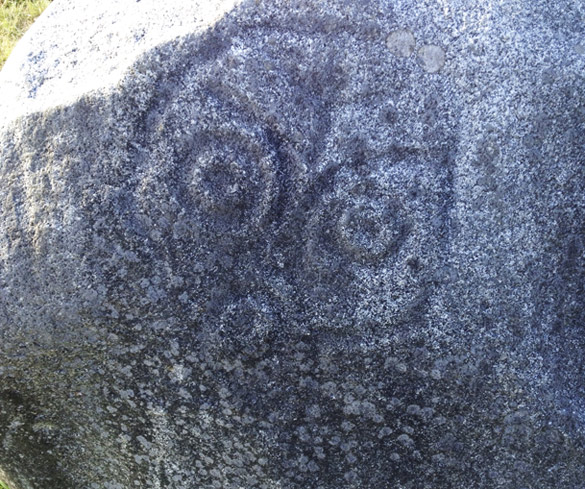
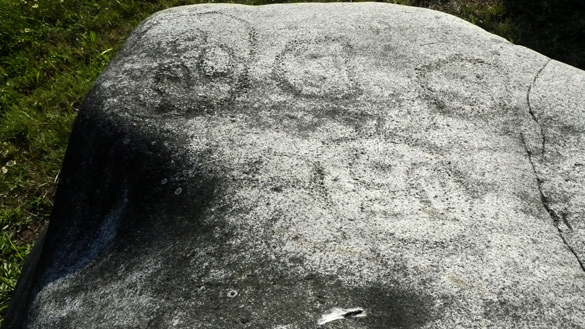
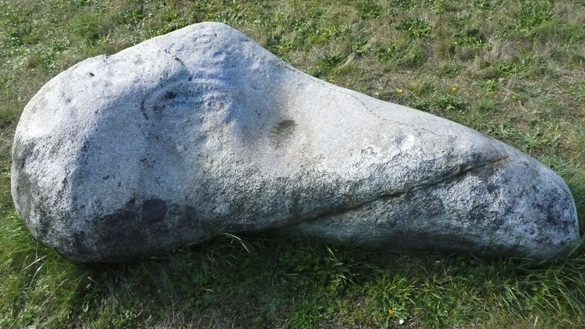
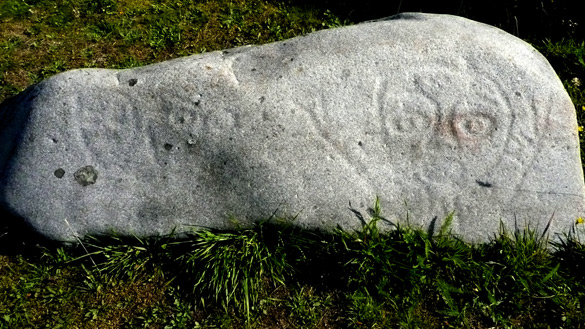
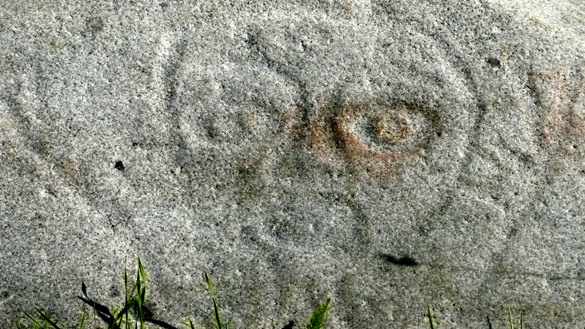
One reason we stayed at Campbell River the first night of our island hopping holiday was that we wanted to visit Quadra Island, a short ferry ride away. Some years ago when I was researching rock art around British Columbia, I had come across and written about Spirit in the Stone, a marvelous book by Joy Inglis, about the numerous First Nations petroglyphs on Quadra Island. It had been a longtime dream of mine to visit this island and its rock art, some about 3000 years old.
Our focus was to visit the museum and to see some of those stones that had been placed nearby. Photographing these were a challenge for the light was already too high and bright, so there was much processing needed, these ones being the best I could do. We did not have time to explore the whole island and visit other stones but hope to revisit again another time.
The top photo shows Ah-Wah-Qwa-Dzas, a gathering place on the shore in front of the museum. You can see Campbell River on the other side. We admired the displays inside the museum called the Nuyumbalees Cultural Centre – the numerous masks and other fine arts and crafts, a longboat, many photos of the old longhouses and much about the early history and impacts (many quite devastating such as several deadly smallpox epidemics) of white man’s arrival to these coastal communities. I think our German visitors found it all enlightening and sometimes quite shocking. No photos were allowed. Please do read the museum’s interesting website for more information.
September 27, 2013 in Anthropology, Canada and BC, Culture, Rock Art & Archaeology, Travel by Marja-Leena
I think your photos of the spirit stones came out remarkably well considering the circumstances. The glyphs themselves seem to be very worn and shallow compared to the way they likely looked when new.
It’s unfortunate you couldn’t photograph in the museum itself but the totems in the gathering place are wonderful. I hope you do get to return for further exploration.
Susan, thanks, it was a challenge especially when the images have to be made so small for the web. Yes, the petroglyphs are quite worn by time and hard to see in bright overhead sunlight. I was often bending down looking sideways to find them. Can you imagine how deep and prominent they must have been 3000 years ago?! I’m so very glad to have seen them and look forward to another but longer visit to Quadra Island sometime in the future.
Marja-Leena!
We have a growing number of found petroglyphs in Finland. The first ones found are high up on a rock growing up from the lake. It’s been assumed that lake Saimaa was that time much higher, so the painter (yes, the petroglyphs of you photo’s some had red paint, is it an accident?) had been able to paint pictures of people and moose and birds and other stuff from the boat. Or standing on the ice.
They were found I believe in 30’s, but of course people near Astuvansalmi have known about them always. And now almost yearly they find new ones. It’s fine that there are some of Indian art left from early times. The Inuites were not that South? Or the big tribe, Tlingit?
I don’t know how old the paintings and carvings here are, but the permanent Ice left about 10 000-8000 years ago. How did they figure out the timing? Something with carbon datable? Here there could be maybe something possible to be found in iron oxide of the red paint, but snow and ice make it difficult.
Hei Ripsa! Excellent questions as always!
How exciting that more rock art works are being found in Finland. I think most, maybe all are pictographs or paintings. (Petroglyphs are carved or engraved into the rock.) Quadra Island’s are all petroglyphs, though that stain on that last rock does look rather like a pictograph. As you can imagine, paints wear off faster than the engravings.
I have studied a lot of the Finnish rock art, and some of it especially Astuvansalmi has inspired my art work as well. Do you know of Ismo Luukkonen’s photos and research which I’ve blogged about several times over the years? Also the important work of Pekka Kivikäs… I have a couple of his books.
I don’t think the Inuit made it this far south. The Tlingit are one of many different First nations tribes all along the BC coast and the interior. A recent study has found that the First Nations have been on this coast for 5500 years or more.
It’s all very exciting, isn’t it?
It is interesting how skilled the artists must have been to make the deep carvings – not only artistically, but technically too in order to have the right tools. Or at least they had to know what tools to ask for. The glyphs must have been very important to them to expend all that energy again and again.
It’s astonishing what folks got up to in those far back days. I am reading about the deciphering of Minoan Linear B, and find the whole question of language and notation enthralling. Petroglyphs are also very much a version of language too – all to the purpose of communication. And here we are, still trying to understand!
Olga, stone is certainly a tough material to work with if carving compared to painting. Apparently there are some 100 or so of these petroglyph stones on Quadra. There were spiritual, artistic and storytelling reasons for making them and they are still revered by the island’s First Nations people.
I too have read that this kind of mark making was a form of language. Those long ago peoples were smarter than is often given credit.
Oh, that is a perfect Marja-Leena day!
Are they sheltered at all? The stone looks grainy.
Near my family home in Cullowhee, North Carolina is Judaculla rock, and in recent years a shelter has been placed over it. When I was a kid, cows scratched their backsides on it, and teens clambered over it. http://www.judacullarock.com May have sent you a link before…
I hope you are all recovered!
Marly, yes, my kind of day indeed. The stones are not covered at all and actually, they are quite smooth. I’m not sure that’s a problem on such a remote island. The graininess is from the photo editing to bring out the details.
I remember your mention of the Judaculla rock, which is so large, flast and amazing with so very many images on it! Thanks for the link.
Thanks, though I’m sad to say my cold is still raging, at the heavy cough stage now, matching the miserable weather. Must-get-well by the weekend.
You did a fine job of bringing out the subtleties of these rock carvings. Not as simple and easy as one might think.
Does anyone know how old they are?
Hattie, the museum has signs posted by some of the rocks stating about 3000 years. Yesterday I took out Joy Inglis’ book (1998) from the library to reread after many years but haven’t checked this info yet. In a tiny little guide book by her which I have, and which is based on the book itself but published later, she wrote that the First Nations people have been living here for approximately 2,500 years as determined by carbon dating, but that it was unlikely the stone carvings would have survived erosion on beaches swept by surf more than 2000 years.
The stone faces make me think of primitive emoticons.
Joe, yes, they do look a bit like that. The illustrations in Inglis’ book, done by Hilary Stewart, look even more like emoticons.